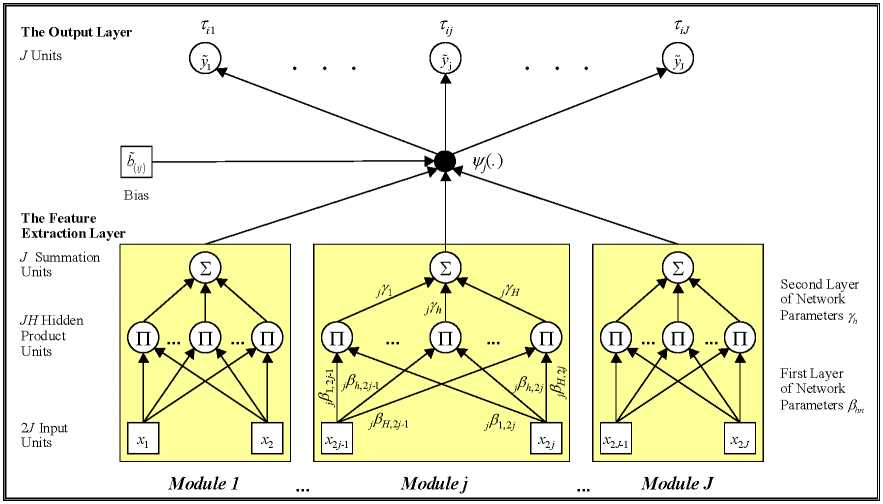with a single summation unit, denoted by the symbol Σ . The collective outputs of these
modules constitute the input to the second processing layer consisting of J output units
that perform the flow prediction by applying some sort of the Bradley-Terry-Luce
model and enforcing satisfactorily the conservation rule of interaction from the
viewpoint of origins [destinations]4.

Figure 1: Architecture of the Product Unit Neural Spatial Interaction Model: The
Singly Constrained Case
The first layer of network parameters includes 2JH connection weights, so that
1 w ( j ^( j-1) H +1,2 j -1’ ..., j ^( j-1) H+h ,2 j-1’ "ɔ j PjH ,2 j-1, j P( j -1) H +1,2 j ’ ''" j P( j -1) H+h ,2 j ’ ''" j PjH ,2 j )
(10)
while the second layer contains JH weights:
2 w ( j ^( j-1) H +1’ ..., j ^( j-1) H+h’ ..., j ^ jH )
(11)
We have incorporated the basic trick of weight sharing into our network design to
reduce model complexity. Weight sharing involves forcing the set of connection
weights to be identical across the Jmodules. Thus, w = ( 1 w, 2 w) is a (3H)-dimensional
11
More intriguing information
1. The name is absent2. CONSUMER ACCEPTANCE OF GENETICALLY MODIFIED FOODS
3. The name is absent
4. An Investigation of transience upon mothers of primary-aged children and their school
5. Learning-by-Exporting? Firm-Level Evidence for UK Manufacturing and Services Sectors
6. The name is absent
7. Evolving robust and specialized car racing skills
8. Gender and headship in the twenty-first century
9. Benefits of travel time savings for freight transportation : beyond the costs
10. Aktive Klienten - Aktive Politik? (Wie) Läßt sich dauerhafte Unabhängigkeit von Sozialhilfe erreichen? Ein Literaturbericht